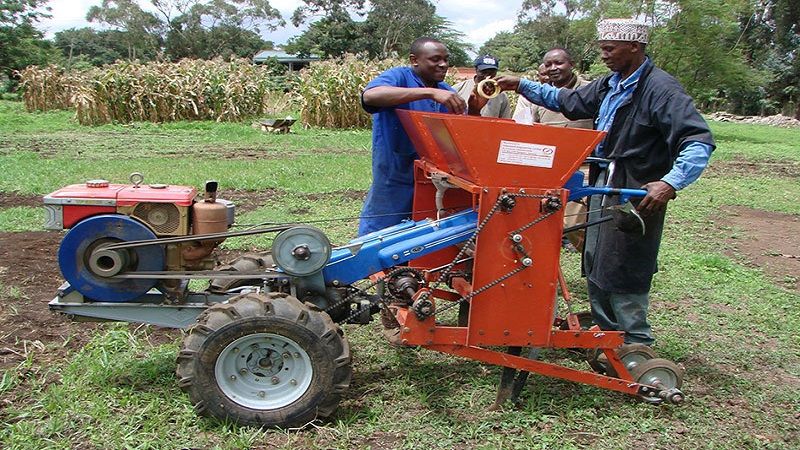Agricultural Mechanization
Agricultural Mechanization is the combination of two different words Agricultural and Mechanization in contracted to AgricMechanization.
Agricultural: is the cultivation of plants and rearing of Animals for human usage. Agriculture has played a vital role in our lives I believe without Agricultural nobody will exist today because there will be no enough nutrition for human and animal to be alive.
Mechanization: is the replacement working largely of both human and animal power with machinery.
Every machine is designed for a purpose this enhances and increase work productivity in the modern days, many machines have been invented even the machine which can perform multiple actions.
Machines, in fact, is interposed between the power and the work, for the purpose of adapting the one to the other.
source:
Definition Agricultural Mechanization
I will make this short and concise Agricultural Mechanization; is the act of replacing both human and animal power in Agriculture.
Short History
Back in Ancient colonial days, we used hands and Draught Animal in farming; By the early 20th century machines developed the ability to perform more complex operations that had previously been done by skilled craftsmen. An example is the glass bottle making machine developed 1905. It replaced highly paid glass blowers and child labour helpers and led to the mass production of glass bottles which we now see many machines today.
After 1900 factories were electrified, and electric motors and controls were used to perform more complicated mechanical operations. This resulted in mechanized processes to manufacture almost all goods.
Reasons for changing the power source for crop production from muscles (human or animal) to tractors:
In spite of these perceived benefits and the fact that animals had been largely replaced by tractors in both the United States and Western Europe by the 1950s, arguments were still put forward urging caution in the developing world (as highlighted by FAO, 2008). The main preoccupation was the effect of mechanization on rural employment opportunities. At the time, it was not understood that mechanization affected mainly on-farm family employment, not hired labour. Mechanization, in fact, enables farm family members not only to increase farm productivity via production intensification and/or expansion but also to seek off-farm employment opportunities as a result of the increased time made available to look for and be engaged in such employment. Moreover, it was not appreciated that mechanization applied only to specific farm production tasks (in particular land preparation), and consequently had little effect on hired labour unemployment as previously presumed. The International Food Policy Research Institute IFRP, enriches the debate on the social factors associated with mechanization by pointing out that in the past, forced mechanization was associated with the displacement of tenant farmers and rural labour. However, in Africa, mechanization is more likely to increase labour demand when it enables more land to be cultivated (and when it is profitably applied along the value chain). IFPRI points out that mechanization is just one component in the agricultural intensification process; mechanization should not actually initiate intensification where it is not already driven by population pressure and market demand. IFPRI quotes Boserup (1965) in this respect and concludes that there are many areas where demand for mechanization has emerged from the smallholder sector.
source
The number of 4-wheel tractors as an indicator of advancement in
Mechanization, FAO (2008) reports the following trends over the past 40 years from 1961 - 2000
Conclusion
Mechanization has really changed the level of Agriculture, it has increased the level of production.
References
Reference 1
Reference 2
Reference 3





Please always put sources that are quoted and use
>to quote the part. Thanks a lot.okay sir, thanks.
I have edited and did the needful thanks.
Ok. Next time quote sparingly. The work should be like 90% or more of the post.
okay Boss noted thanks for the lecture